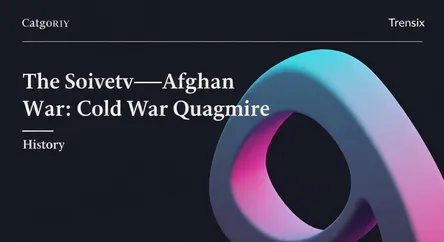History
The Soviet-Afghan War: A Cold War Quagmire

An overview of the 1979-1989 conflict where the Soviet Union's invasion of Afghanistan led to a prolonged and devastating proxy war.
What is it?
The Soviet-Afghan War was a nine-year conflict that began with the Soviet Union's invasion of Afghanistan in December 1979 to support the struggling communist government. Soviet forces and the Democratic Republic of Afghanistan's army fought against guerrilla groups known as the mujahideen. The mujahideen were a coalition of Islamic insurgent groups who opposed the secular, pro-Soviet government. The war was a brutal, drawn-out affair, with Soviet forces controlling the cities while the mujahideen held the rugged countryside. The conflict is often referred to as the "Soviet Union's Vietnam," a costly and ultimately unwinnable war that ended with the withdrawal of Soviet troops in February 1989.
Why is it trending?
The war is a pivotal event in modern history, marking a significant escalation of the Cold War. The United States, along with Pakistan, China, and other nations, provided extensive support to the mujahideen to counter Soviet influence in the region. This turned the conflict into a major proxy war between the two superpowers. The war's immense cost and failure are considered contributing factors to the eventual dissolution of the Soviet Union in 1991. Its legacy continues to be relevant in discussions about foreign intervention, guerrilla warfare, and the complex political landscape of modern Afghanistan.
How does it affect people?
The war had catastrophic consequences for the Afghan people. It is estimated that between one and three million Afghans were killed, and millions more were forced to flee as refugees, primarily to neighboring Pakistan and Iran. The conflict caused widespread destruction of villages, infrastructure, and agricultural land, leading to long-lasting socio-economic turmoil. For the Soviet Union, the war resulted in around 15,000 military deaths and contributed to growing domestic discontent. The subsequent power vacuum after the Soviet withdrawal plunged Afghanistan into a prolonged civil war, setting the stage for decades of instability and conflict that continue to affect the population today.